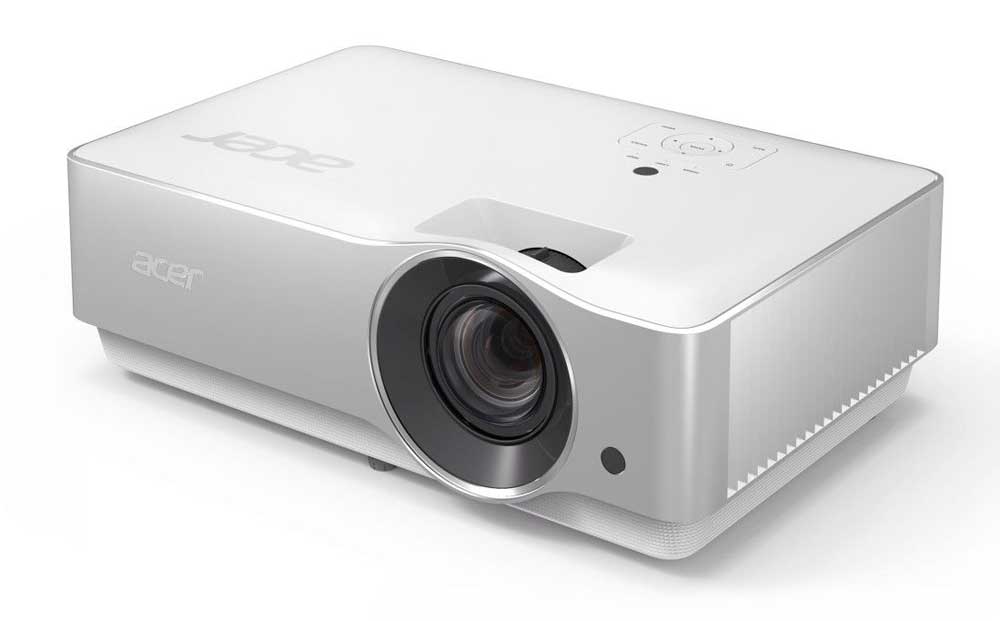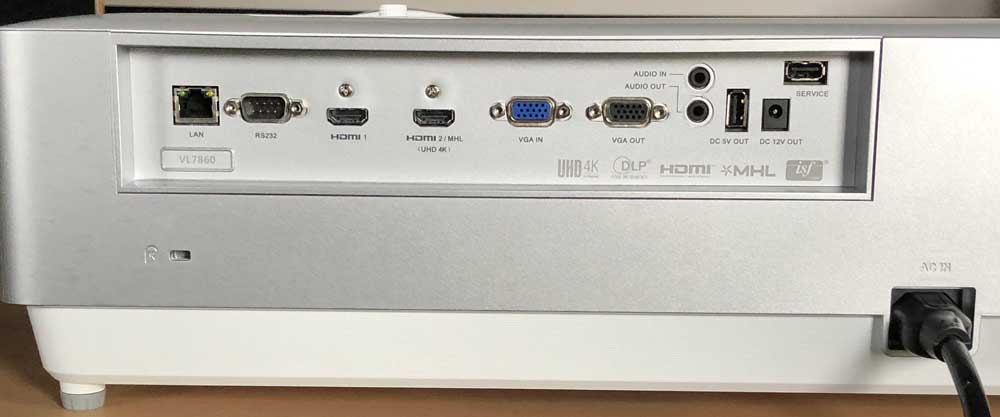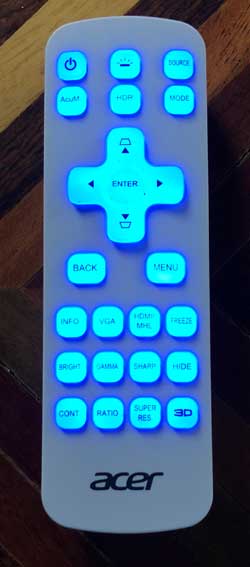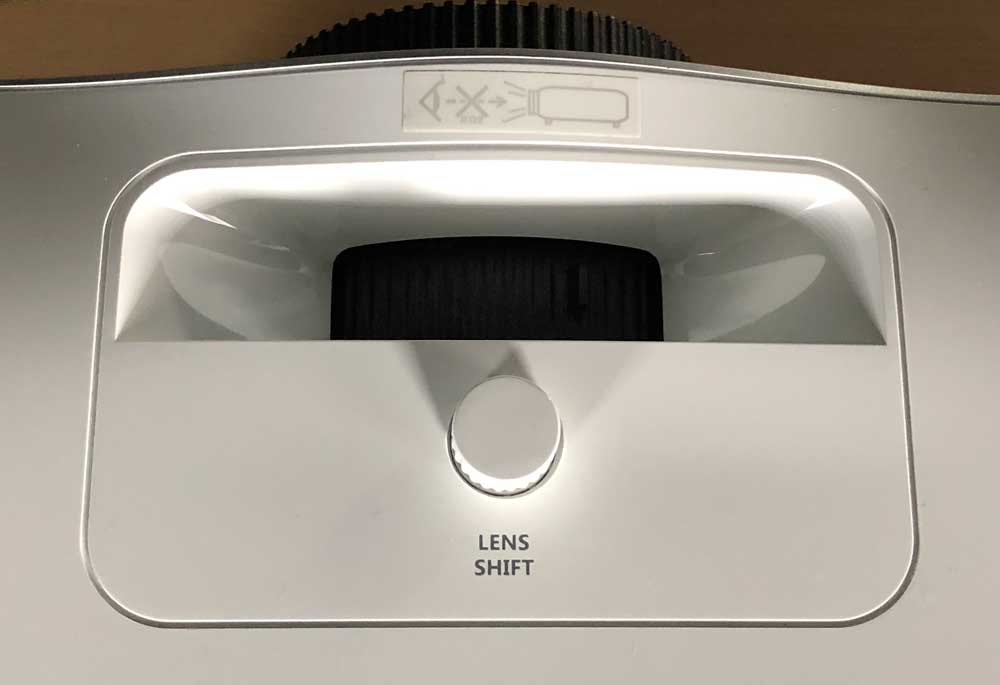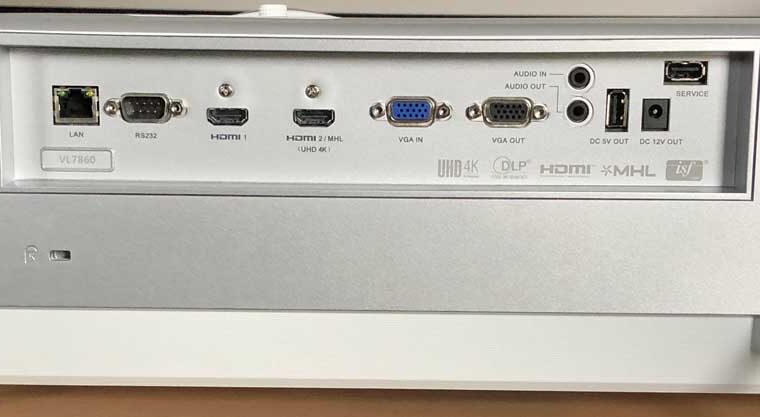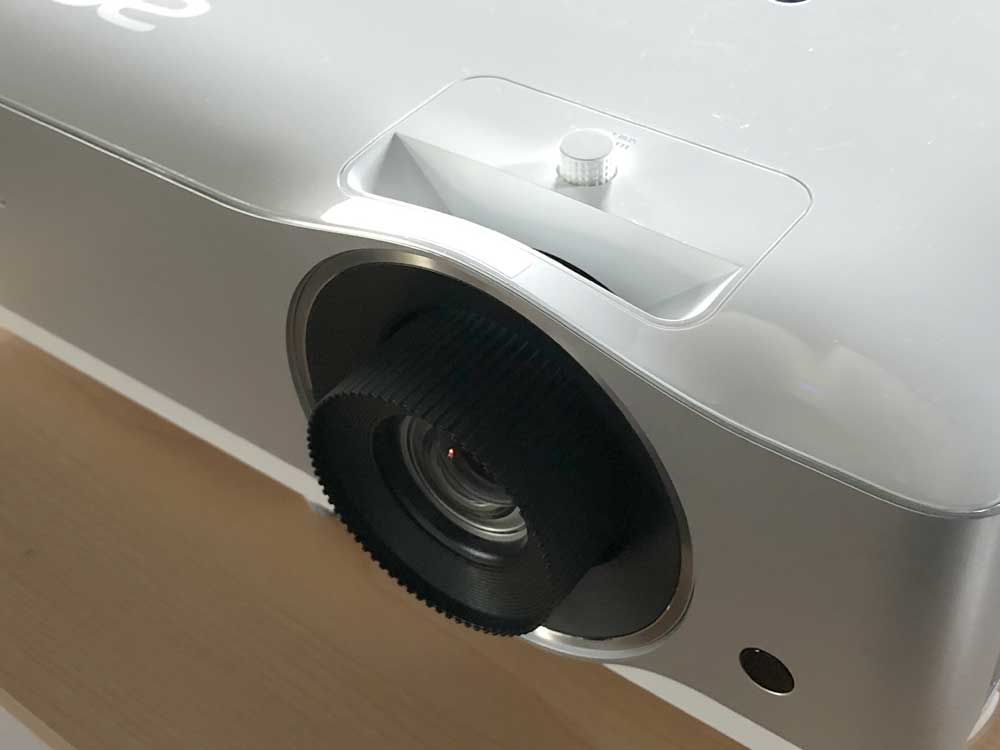The VL7860 connector panel is shown in the above photo. Included, from left to right, are connectors for LAN (wired network), RS232 (for “old school” command and control), two HDMI inputs (note: only HDMI 2 supports 4K/UHD signals and also MHL, although that’s pretty common as most projector companies are still including the older HDMI 1.4 to ensure backward compatibility with older gear).
There’s a VGA input (HD15) – analog computer input, and also a VGA out. Mostly those VGAs are features disappearing from home projectors, but still common on business and education projectors. VGAs are “legacy” and appear on home projectors that are “crossovers” designed primarily for business education, but also enhanced for home use.
There’s a stereo audio input (stereo mini jack) and audio out (same). As is typical, plugging a cable into the audio out will automatically shut off the internal pair of 5-watt speakers. Sadly, projector manufacturers haven’t figured that out yet, at least for home use, there’s a better solution. Consider:
Let’s say you don’t have a serious home audio system. You set up your Acer in your den to watch stuff, you rely on the two small 5-watt speakers. They are, at best, adequate – they have volume, no extreme high frequencies nor medium and low bass. You get about what you would expect.
Sure, you can “replace” with the audio out, to a bigger boom box etc., but assuming you don’t have a serious audio system, there’s probably a better solution, for the audio output:
If we have the option to use the audio out while the internal speakers still play, folks would go out and buy small, powered sub-woofers (from under $50), that would add a lot of much cleaner, lower, deeper bass, to the sound the internal speakers produce, the improvement should prove dramatic!
Dramatic, but at a low cost, with a physically small add on that might only weigh 5 pounds (or could be a good bit more).
Now that would be a big Win-Win for those without a real surround sound system. Alas, I’ve been pointing this out to most manufacturers that would listen, for at least 5-6 years. Still waiting for the first to add that customer friendly capability. But, I digress.
There’s also a USB 5-volt output, 12 volt output (screen trigger) and a service connector for firmware updates. No indication yet though, that this projector is field upgradable (few are). The power connector is located toward the bottom-left of the rear panel.

